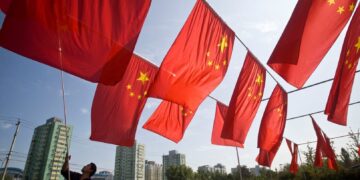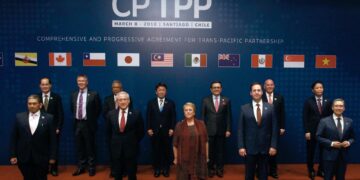China’s outsourcing providers are improving their quality, setting the stage for the country to become a top world player.China has made major strides in laying the groundwork for a diverse and successful outsourcing industry in recent years. Central and local authorities have demonstrated a quiet determination to promote information technology (IT) and other business services industries across the country. They have also launched initiatives to develop education, training, and other supporting infrastructure.
As a result, China is quickly building a strong outsourcing industry, and emerging outsourcing players already have strong credentials. Like India, whose emergence as an outsourcing location was export-driven, China has a strong export platform on which to build an outsourcing industry. But China also has the strength in its domestic market to create a deep services base and has already established strong ties in the Japanese and South Korean markets.
Despite China’s significant progress in this area, a few challenges—such as a fragmented outsourcing industry and shortage of people with international business skills—remain. In addition, many domestic and foreign business leaders recognize that China’s outsourcing industry could market its strengths to the international community better and that the industry lacks a unified voice to represent it and establish its credentials. Buyers of outsourcing services have a wide array of locations and vendors to choose from and, without realizing the outsourcing strengths of various cities in China, may choose to outsource work to another country instead. Multinational corporations (MNCs) should investigate the opportunities and risks in China’s rapidly growing outsourcing industry.
The growth of global outsourcing
Globally, only 10 percent of MNCs outsourced IT work offshore in 2002, but that figure had risen to 70 percent by 2008, according to Oppenheimer Equity Research. Gartner Inc. estimates that by 2012, the worldwide IT services market, which is the largest segment within the outsourcing industry as a whole, will top $1 trillion.
As the outsourcing industry has become increasingly sophisticated, suppliers have also progressed to specialize in niche areas, such as legal services, animation and gaming, e-learning, online tutoring, offshore engineering, high-tech and telecom engineering, and pharmaceutical research and development (R&D). Analysts expect outsourcing and offshoring in these sectors to skyrocket in the coming years. For example, offshore engineering is expected to grow from $10-$15 billion in 2006 to $150-$225 billion by 2020.
Development of China’s outsourcing market
China’s outsourcing market is in its infancy, accounting for a fraction of the $1 trillion-plus global market for offshoring and outsourcing, according to McKinsey & Co. But the market is quickly evolving.
In 2007, China’s outsourcing market (including work outsourced within China) weighed in at $15.2 billion, with IT outsourcing and business process outsourcing (BPO) exceeding $9 billion and $6 billion, respectively. Revenues from work offshored to China rose more than 40 percent in 2007, reaching $2.3 billion or 15 percent of the total work outsourced. By 2010, the value of offshore work done in China is expected to more than double, hitting $5.6 billion, or 20 percent of the total.
Gains in China’s offshore contracts, largely for IT, far outpace those of the global market. A VanceInfo Technologies Inc. report forecasts China’s IT outsourcing growth to soar 30 percent annually from 2009 to 2013, compared with an impressive but more modest 19 percent growth elsewhere in the world for the same period. Oppenheimer Equity Research and IDC, a subsidiary of International Data Group, predict similarly large gains for work outsourced to China—$7.1 billion in 2010, and up to $8.9 billion in 2012, respectively.
China now has more than 6,600 outsourcing firms that provide services for foreign companies, according to the PRC Ministry of Commerce (MOFCOM). These companies generate annual revenues of more than $50 million.
Several studies and rankings track China’s progress as a popular destination for outsourcing of IT and other business services:
- In a 2008 IDC report, three Chinese cities made the list of top 10 most attractive Asian Pacific cities for outsourcing. The report forecasts that, by 2011, Shanghai will beat Bangalore for the top spot; Dalian, Liaoning, will rank third; and Beijing will rank fifth.
- China ranked second in the world as an outsourcing destination in A.T. Kearney’s 2007 (and 2005) scorecard, which weighs financial attractiveness, people and skills availability, and business environment.
- A 2007 R&D Magazine survey of US-based organizations that offshored their R&D work showed that about 18 percent offshored some work to China and 19 percent offshored some work to India.
From East to West
In the past, Japan and South Korea have been the primary clients of China’s offshore industry. In 2007, these two countries comprised 52 percent of China’s offshore software development market. Chinese services providers are, however, adapting their strategies and expanding globally to win significant contracts from major MNCs. MNC subsidiaries in China account for a large portion of the software development market.
In 2007, North American and European business made up 40 percent of all offshore work done in China and revenues from these sources grew by 61 percent over 2006, compared to a more modest 32 percent increase from Japanese and South Korean markets. By 2010, these Western clients will likely account for 50 percent of China’s offshore software market, according to IDC forecasts.
Hong Kong’s role
Chinese vendors are beginning to tap Hong Kong to bring in business from banks, insurance companies, and law firms. Hong Kong offers several key advantages: it is an avenue for raising funds, a hub for project management, and a management support center that understands international business requirements and expectations. Chinese vendors can also fairly easily provide lower-cost back-office support to Hong Kong-based companies.
China’s domestic market
The next wave of customers is likely to come from enterprises that are new to outsourcing, most notably domestic Chinese companies. Already an emerging force, local demand for IT and BPO services in China is projected to nearly double from $10.5 billion in 2006 to $20.6 billion in 2010. According to the National Association of Software and Services Companies (NASSCOM), the main trade body and chamber of commerce of the IT-BPO industries in India, as more Chinese companies recognize the need for outsourcing, complementary skills, local and international experience, and industry practices together with cost saving will be the priority. China’s numerous outsourcing services providers are well-positioned to fulfill these needs.
China’s strengths
Today, Chinese outsourcing providers work with companies from around the world. Many have signed long-term contracts with blue-chip customers, including Microsoft Corp., Hewlett-Packard Co., and Oracle Corp. Chinese firms provide MNCs with a range of services—from back-office administrative work and customer service requests to increasingly high-end IT, business-process, and knowledge-management activities.
Skill levels have improved steadily. A McKinsey & Co. survey of 75 Chinese software and IT services companies found that the number of Chinese vendors achieving Capability Maturing Model (CMM) level 4 or 5 certification grew by about 39 percent each year from 2004 to 2007. (CMM is a framework for applying quality management principles to software development. Five is the highest level.)
Chinese vendors also offer specific business knowledge in areas such as banking, insurance, and healthcare. Such specialization creates closer links between vendor and client, resulting in higher productivity and profitability for both.
Government support for outsourcing
For several years, the PRC government has emphasized the development of IT as a complement to the nation’s strength in manufacturing. The initial focus was on hardware production, but the 11th Five-Year Plan (2006-10) shifted the emphasis toward IT services. A broader strategy through 2020 (China’s 15-year plan for the development of science and technology) calls for development of a robust IT economy, driven by science and home-grown innovation, that supports the domestic and global industry and provides higher-value services jobs.
Core to China’s services outsourcing initiative is the “1,000-100-10” project, established by MOFCOM in October 2006. With total funding of more than $1 billion, the project aims to double China’s services exports by establishing 10 Chinese cities as outsourcing bases, attracting 100 international corporate customers to offshore in these cities, and assisting the development of 1,000 outsourcing vendors that can meet the demands of MNCs. The plan, and its related policies, calls for:
- Funds and incentives to improve training in technical skills and upgrade quality standards to achieve international certification levels;
- A framework to improve intellectual property rights (IPR) protection;
- Improvements in infrastructure to support the outsourcing industry;
- Loans and credit insurance for outsourcing enterprises;
- A ¥4,500 ($660) subsidy to vendors for every new college graduate employed for at least one year;
- Interest rates that favor exporters of software services;
- Priority for software businesses applying for public listings on domestic or overseas exchanges;
- Support for R&D centers set up by domestic businesses with academic institutions; and
- Tax breaks to encourage development outside key outsourcing centers.
Since these details were announced, the PRC State Council has designated 20 cities as services outsourcing hubs (see the map below). Some cities that have emerged in recent years as new IT and BPO destinations specialize in certain industries. For example, Changsha, Hunan, is building on its education, research, and training foundation to become a hub for outsourced animation services. Hangzhou, Zhejiang, has positioned itself as a hub for financial services outsourcing. And Dalian is known as an important IT and BPO center for large Japanese companies, including Sony Corp., Panasonic Corp., and NEC Corp.
Advanced technical skills
One of China’s strengths in outsourcing is its vast talent pool of skilled technicians and engineers. In 2006, China graduated more than 1.5 million engineering majors, according to the PRC National Bureau of Statistics’ 2007 China Statistical Yearbook. In comparison, the United States graduated 124,388 engineering and engineering technology majors in 2006, according to the US-based National Science Foundation. (These countries may define “engineering graduates” differently.) Moreover, China produced 41,464 PhD graduates in 2007, of whom nearly 14,500 were in engineering and over 8,000 were in science. Chinese returning home with degrees from top schools in the United States, Canada, and the United Kingdom provide another source of high-quality talent.
Though China has a massive pool of engineers at the entry level, they will need to gain work experience before the market has enough senior project managers (see Creating an Innovative Talent Pool). Chinasoft’s CEO of IT outsourcing services points out that senior-level program managers and architects still account for a low percentage of the country’s domestic outsourcing market workers.
Foreign-language skills
PRC officials and outsourcing companies have recognized the need for advanced English-language skills to win business from Western markets and compete with rival locations in India and the Philippines. The PRC government has made English instruction a strategic priority at universities and even in primary school, where English as a foreign language is mandatory beginning in the third grade.
Another boost to China’s outsourcing market is the roughly 2 million Chinese who speak Japanese or Korean, a particularly key consideration in northeastern hubs such as Dalian.
Competitive wages
China also compares favorably in terms of wage costs, although average billing rates vary widely across regions. Wages in Shanghai and Beijing tend to be higher, and wages in second-tier cities—such as Wuxi, Jiangsu, and Chengdu, Sichuan—are lower. Charge-out rates in China are generally 30 percent to 50 percent less than India’s prevailing rates. NASSCOM estimated in 2007 that the wage cost of a newly graduated engineer started at $250-$300 per month in China, far less than the average wage cost of $750-$1,000 per month in India. For higher-level IT jobs, the wage gap between China and India is smaller, partly because wages have increased 15 percent annually in China’s software industry in recent years.
Challenges for outsourcing to China
Location
As in India, the availability of technical skills, language skills, and other resources in China varies enormously from one location to the next. Many sites within China compete for investment, and companies must understand each region’s strengths and weaknesses.
IPR protection
IPR protection is a particularly important issue in outsourcing, especially when vendors have access to sensitive data. Most outsourcing service providers in China have adopted strict security measures to prevent customers’ intellectual property from falling into the wrong hands.
Many companies are still concerned about how to protect their IPR, however. PRC government efforts to resolve the problem, such as promoting the installation of licensed software at enterprises, have led to a reduction in IPR infringement. Since China entered the World Trade Organization in 2001, clearer measures to protect copyrights and patents have also helped, but there is still room to improve IPR enforcement.
Competition and collaboration with India
China’s market fragmentation is becoming more pronounced as competition from abroad, especially India, increases. Indian companies, including Infosys Technologies Ltd., Wipro Ltd., and Tata Group, are rapidly establishing footprints in China, bringing with them many years of experience working with large multinational customers.
Some forward-thinking Chinese service providers are already considering how to work with Indian vendors in complementary ways. This collaboration could include sharing human resources and training facilities. Indian and Chinese companies could also team up to provide end-to-end technology jobs—China focusing on its strengths in hardware and India on software. Indian companies could leverage lower costs in China for back-office work, while Chinese firms could gain maturity and experience by serving international clients.
China: An emerging leader in outsourcing
Because of the PRC government’s focus on and investments in technology, education, and infrastructure—and China’s strong entrepreneurial culture—the country has emerged as a favorable destination for IT and business process outsourcing. China’s large companies and financial institutions are also exploring outsourcing, and they represent an attractive market with considerable potential for companies that provide outsourcing services. Problems and risks still exist in China’s outsourcing sector, but companies that understand and manage those risks effectively—by using independent advisors with local and global knowledge and experience and by conducting due diligence—can achieve a competitive advantage.
With today’s economic conditions posing severe challenges for business, more companies are positioning themselves for the eventual recovery and evaluating the effective use of external providers to help them support and expand their operations. China has made itself a key location by enhancing skill availability, making focused investments, and addressing IPR concerns.
[author]Ning Wright is a partner in charge of China Sourcing Advisory at KPMG China. She is based in Shanghai.[/author]































